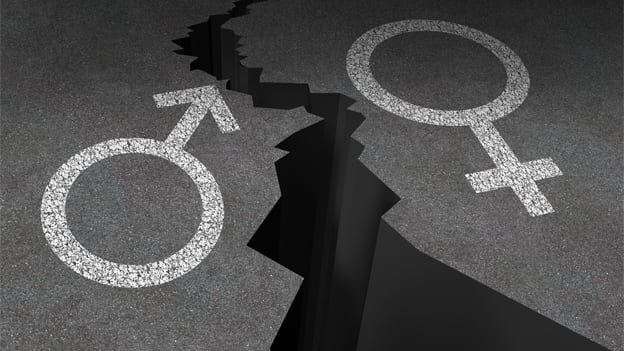Gender wage gap widened in 2018 in Singapore

Singapore's gender wage gap increased in 2018, with the median monthly wage for women representing 88% of men's in the country (91% in 2017), shows Ministry of Manpower, Singapore data. In 2017, the median wage for women working full-time was 90.8% of the median wage for men, in 2018 this ratio decreased to 87.5%, its lowest in the past decade, according to the analysis by William Hofmann, a Senior Research Analyst at ValueChampion Singapore.
It is important to understand that this wage discrepancy does not account for job title, education level, or work experience. However, it is still relevant as it gives a picture of about how much men and women earn in Singapore, on average.
Industries with the worst gender wage gap
The wage gap tends to be particularly high in the health & social services, manufacturing, accommodation & food services, information & communications and financial & insurance services industries.
This group also includes some of the highest paying industries, which suggests that women are less likely to have some of the highest paying roles in the country. For example, women make up 52% of the financial & insurance industry workforce, but just 43% of the employees earning at least S$7,000 per month in that sector. Similarly, women make up 77% of the health & social services workforce, but represent only 51% of employees in that industry that earn at least S$7,000 monthly. Meanwhile, women represent 85% of the employees earning less than S$2,000 per month.
Industries with the least gender wage gap
On the other hand, women face a relatively smaller wage gap in industries such as real estate, construction, arts and recreation and other service-related sectors. In fact, the median wage for women in the transportation & storage and administrative industries is actually higher than it is for men. However, it is worth noting that women make up just 24% of the transportation & storage and 26% of the construction workforces. This suggests that the impact of this wage advantage in these industries may be somewhat limited for women in Singapore.
What changed since 2017
Women made significantly less compared to men in the real estate services and health and social services industries in 2018 compared to 2017. Additionally, women's median wages in transportation & storage and administrative & support services exceeded men's by a smaller margin in 2018 than in 2017. For example, the median wage of women in the transportation & storage industry was 150% of their male counterparts in 2018, but just 127% in 2018. However, the wage gap narrowed for professional services and manufacturing. For more details, please refer to the table below.
Women in Singapore are more likely to work in some roles and less likely to work in others. For instance, women are much more likely than men to work in service, education and care related roles, such as personal care workers, clerks, teachers and customer service workers.
On the other hand, men are much more likely than women to be employed in engineering and technical roles, which tend to pay high wages. For example, women represent a smaller fraction of engineering professionals (26%) and information & communications technology professionals (29%).
While the income gap widened slightly between 2017 and 2018, there are some positive trends in terms of gender equality in Singapore's labour market. First, median wage for part-time, female workers (S$1,023) now represents 94% of that of their male counterparts (S$1,090). This percentage increased only slightly from 2017 (93%), but has improved significantly from a decade ago (86% in 2008).
How does wage equality in Singapore compare globally?
The World Economic Forum's Survey of Wage Equality Between Women and Men for Similar Work found that Singapore scored the second highest of any country in 2018 with a score of 0.819; Iceland ranked first with a score of 0.820. This represented a relative improvement in terms of score and rank, for Singapore, compared to 2016 when it ranked fourth with a score of 0.810.
However, there are still clear areas of improvement for gender equality in Singapore's workplaces. Notably, while women have become increasingly included on the board's of companies in Singapore, other countries far surpass Singapore in terms of female board representation. For example, France leads the way with 42.5% female board representation and neighboring Malaysia also outpaces Singapore at 19.2%.
Like many major economic issues, there is not a quick fix for Singapore's gender wage gap, argues Hofmann. The problem is multifaceted and difficult to isolate. Some European countries pay for longer maternity and paternity leave or require employers to offer these benefits. These policies allow mothers to transition more seamlessly back into the workforce and encourage men to play a bigger role in housework and childcare, both of which can help women's earning potential in the long run. Furthermore, boosting women's participation in the workforce may positively impact Singapore's economy as a whole. Additionally, some countries such as France, Norway, Germany and India have quotas for the number of women on a public company's board. This can give women important opportunities within a company as well as provide companies with new and valuable perspectives.















